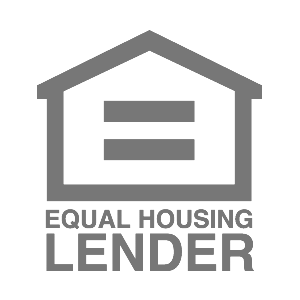As with any major decision you need to make, research is key. That’s why weighing the HELOC pros and cons can help you make an informed decision that suits your financial goals and wellness.

In This Article
What Is a HELOC?
Before we explore HELOC pros and cons, it’s important to first understand what a Home Equity Line of Credit is. A HELOC allows you to borrow money against your home, using the equity that you’ve built up.
The purpose of a HELOC is to provide you access to money for items like:
- Remodeling your home’s kitchen or bathroom
- Financing a new car
- Consolidating debt
Instead of getting the money in one lump sum, like you would with a home equity loan or an online personal loan, a HELOC provides you with a revolving line of credit. Much like a credit card, it allows you to use it as needed. In fact, you don’t even have to make any withdrawals. But if you do, the money you borrow will come from your home’s equity—the greater the equity, the higher the borrowing limit.
Once you withdraw funds from your HELOC, you’ll have to start paying back the amount just as you would a credit card–making monthly payments, including interest.
HELOC Pros and Cons
It’s essential to look at all aspects of a HELOC when determining if it’s the best option for you. While there are both benefits and drawbacks to getting a HELOC, the biggest factor at play is your financial wellness, especially at the time you apply.
For example, if you have equity in your home and have good credit standing, a HELOC can offer you the following benefits:
- Access to a large pool of cash that’s readily available. If you are approved for a HELOC, you’ll likely receive a credit/debit card, a checkbook, or both from your lender, enabling you to access your funds whenever you need them.
- A boost to your credit score. Qualifying for a HELOC typically requires a credit score of 620 or higher. You may even see your credit score gradually rise if you make payments on time and stay on top of managing your HELOC.
- Possible tax benefits. With a HELOC, “you only pay interest on the amount you’ve taken out, and you’re only limited by the total amount of the loan,” according to The Wall Street Journal. Plus, in certain instances, HELOC interest may be tax-deductible[1] if you’re putting funds from your HELOC toward major home improvements.
While there are many advantages to a HELOC, they may not always benefit your specific situation. That is why it’s so important to keep in mind that a HELOC uses your house as collateral. Because of this, it’s imperative to use your HELOC funds appropriately. You must be able to pay back the amount you borrow in the time allotted. If not, you may face foreclosure.
Use our home equity loan calculator to get an idea of what numbers may look like.
Here the risks that can come with a HELOC if you’re not financially prepared:
- Losing your home. Because your house serves as collateral, defaulting on a HELOC means you could lose your home if you fail to make your payments on time.
- Penalties and fees. You want to always read the fine print before you close on a HELOC. HELOCs can involve penalties and fees, including: annual fees, prepayment penalties, or inactivity fees.
- Risk of more debt: If you plan to use a HELOC to consolidate debt and pay off high-interest credit cards, just make sure you don’t rack up even more debt.
Is a HELOC a Good Idea for You?
Once you weigh the HELOC pros and cons, you can start to answer the question: Is a HELOC right for you?
A HELOC may be a good option if:
- You are using funds from your HELOC toward home improvement projects that could increase your home value. Plus, a HELOC put towards home improvements could have tax benefits.
- You have a lot of equity in your home. The more home equity you have, the more money you may be able to borrow with your HELOC.
- You have a good or excellent credit score, which could help you secure a lower interest rate.
- You have a solid financial history and are reliable when it comes to making monthly payments. Since your home serves as collateral with a HELOC, making payments on time and in full avoids putting your home at risk.
- You want to be prepared for any large expenses like weddings, cars, or loan consolidation, in addition to having a pool of money to dip into for emergencies like medical bills.
The bottom line: If you have weighed the HELOC pros and cons and can be prudent with your finances, a HELOC could be the right financial tool for you as a homeowner.
[1] Prosper does not provide tax advice. Please consult a tax advisor regarding the potential deductibility of interest and charges.
Eligibility for a home equity loan or HELOC up to the maximum amount shown depends on the information provided in the home equity application. Depending on the lender, loans above $250,000 may require an in-home appraisal and title insurance. Depending on the lender, HELOC borrowers must take an initial draw of the greater of $50,000 or 50% of the total line amount at closing, except in Texas, where the minimum initial draw at closing is $60,000; subsequent HELOC draws are prohibited during the first 90 days following closing; after the first 90 days following closing, subsequent HELOC draws must be $1,000, or more, except in Texas, where the minimum subsequent draw amount is $4,000.
The amount of time it takes to get funds varies. It is measured from the time the lender receives all documents requested from the applicant and depends on the time it takes to verify information provided in the application. The time period calculation to get funds is based on the first 4 months of 2023 loan fundings, assumes the funds are wired, excludes weekends, and excludes the government-mandated disclosure waiting period.
For Texas home equity products through Prosper, funds cannot be used to pay (in part or in full) non-homestead debt at account opening.
Depending on the lender, qualified home equity applicants may borrow up to 80% – 95% of their primary home’s value and up to 80% – 90% of the value of a second home. In Texas, qualified applicants may borrow up to 80% of their home’s value. HELoan applicants may borrow up to 85% of the value of an investment property (not available for HELOCs).
Home equity products through Prosper may not be available in all states.
All home equity products are underwritten and issued by Prosper’s Lending Partners. Please see your agreement for details.
Prosper Marketplace, Inc. NMLS# 111473
Licensing & Disclosures | NMLS Consumer Access
